Old Port Glasgow
Port Glasgow rose to importance in the eighteenth century as a port for merchants in the city of Glasgow. It developed a maritime infrastructure to service this need and gradually expanded the range of maritime activities beyond the town's original reason for existence. In 1762 the first dry-dock in Scotland was constructed by James Watt and by 1800 there were several thriving shipbuilders in the town. It was entirely appropriate that the first steam powered passenger ship in Europe was constructed as the Comet by John Wood's yard in 1812. The wealth of the town can be seen in David Hamilton's Town Buildings of 1815 (now a library). Trade associated with shipbuilding, such as the Gourock Ropeworks (established 1777), accompanied these developments and by 1900 Port Glasgow had a range of industrial enterprises from the shipyards to raw material refining.
These early twentieth century photographs show a town of heavy industry, activity and many of the social ills that accompanied late Victorian and Edwardian industry such as pollution and slum housing. These photographs were taken in the early 1920s in the aftermath of the First World War. The shipbuilding industry contracted during this period leaving the firm of Lithgow's in a predominant position and bringing much unemployment as shipyards consolidated.

Chapel Lane, Port Glasgow
The upper part of Chapel Lane, Port Glasgow in the 1920s with children playing and a cobbled lane. - 2009.98.10 - © McLean Museum and Art Gallery, Greenock

Chapel Lane, Port Glasgow
Chapel Lane, Port Glasgow, South of the railway bridge with a cobbled lane and telegraph poles. - 2009.98.11 - © McLean Museum and Art Gallery, Greenock
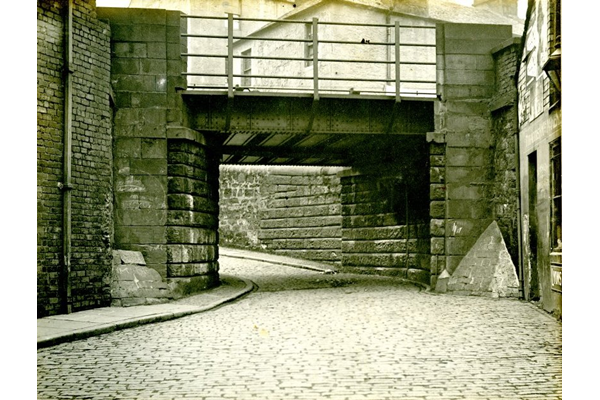
The Railway Bridge, Chapel Lane, Port Glasgow
The railway bridge, Chapel Lane, Port Glasgow from the north with cobbled lane. - 2009.98.12 - © McLean Museum and Art Gallery, Greenock
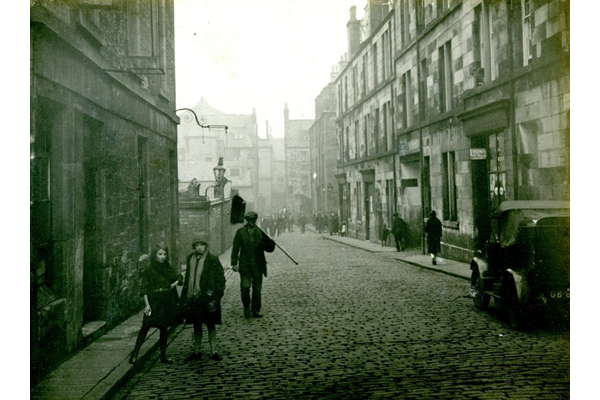
Chapel Lane, Port Glasgow
Chapel Lane, Port Glasgow with crowds on foot and a motor car. - 2009.98.13 - © McLean Museum and Art Gallery, Greenock.
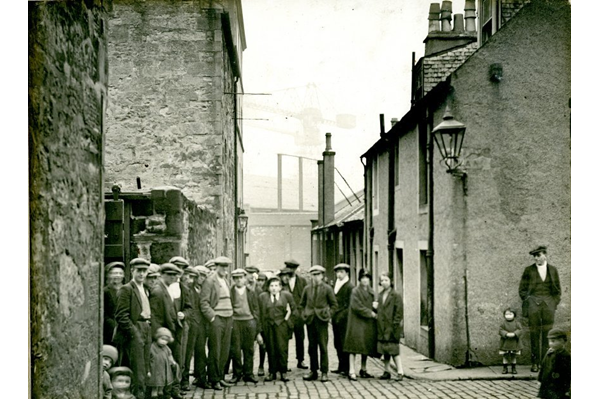
Back Row Lane
Back Row Lane, Port Glasgow from Chapel Lane with a crowd of men, women and children. - 2009.98.14 - © McLean Museum and Art Gallery, Greenock

Church Street, Port Glasgow
Church Street, Port Glasgow with crowd and horse and carriage in the distance. - 2009.98.15 - © McLean Museum and Art Gallery, Greenock

Church Street, Port Glasgow
Church Street, Port Glasgow looking towards the War Memorial. Note the horse and carriage. - 2009.98.16 - © McLean Museum and Art Gallery, Greenock
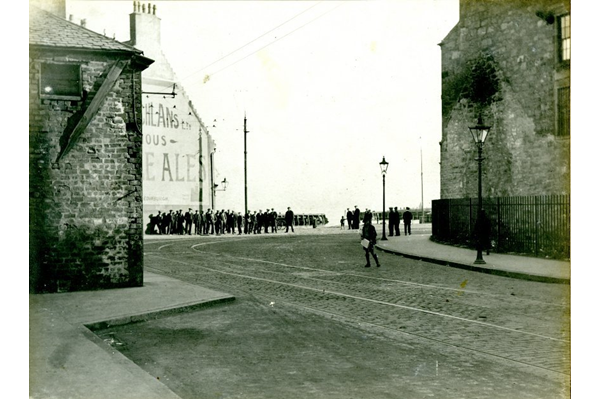
Corner of Scarlow Street and Fore Street, Port Glasgow
Crowds of men gathered at the corner of Scarlow Street and Fore Street, Port Glasgow. - 2009.98.17 - © McLean Museum and Art Gallery, Greenock

Corner of Scarlow Street and Fore Street, Port Glasgow looking West
The corner of Scarlow Street and Fore Street, Port Glasgow looking West, showing a double-decker tramcar. - 2009.98.18 - © McLean Museum and Art Gallery, Greenock
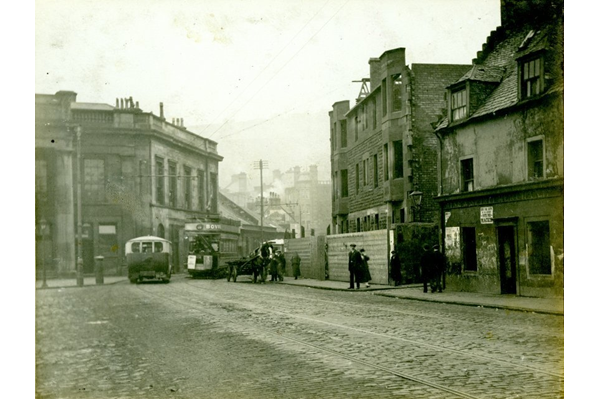
Fore Street, Port Glasgow looking East showing new tenements
Fore Street, Port Glasgow looking East showing the Town Buildings and new tenements. - 2009.98.19 - © McLean Museum and Art Gallery, Greenock

Dockhead Street, Port Glasgow
Groups of men on Dockhead Street, Port Glasgow (so called because it was at the head of the old dry dock). - 2009.98.20 - © McLean Museum and Art Gallery, Greenock
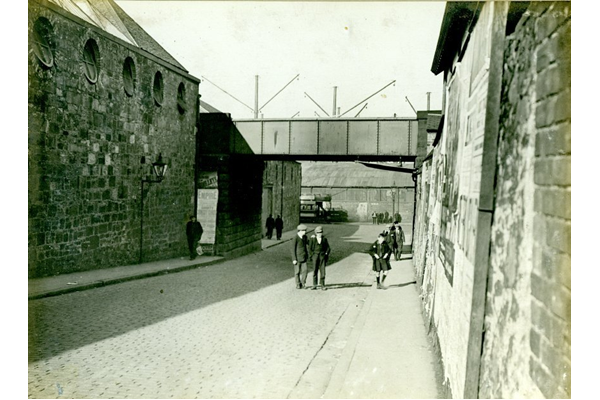
Robert Street, Port Glasgow looking North
Robert Street, Port Glasgow looking North towards the railway terminus. - 2009.98.21 - © McLean Museum and Art Gallery, Greenock
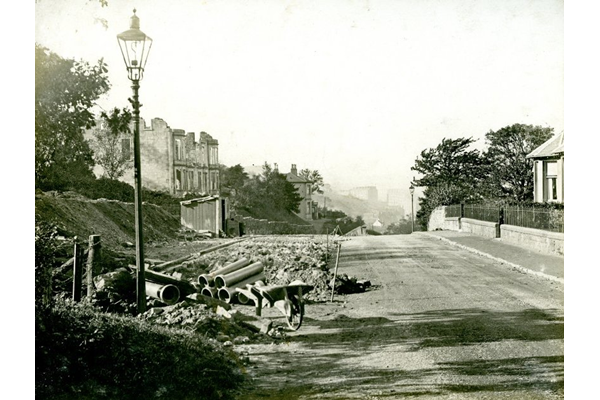
Top of Clune Brae, Port Glasgow looking West
The top of Clune Brae, Port Glasgow looking West showing road widening - 2009.98.22 - © McLean Museum and Art Gallery, Greenock

Roadway near the top of Clune Brae, Port Glasgow
Horse and cart on the roadway near the top of Clune Brae, Port Glasgow. - 2009.98.23 - © McLean Museum and Art Gallery, Greenock
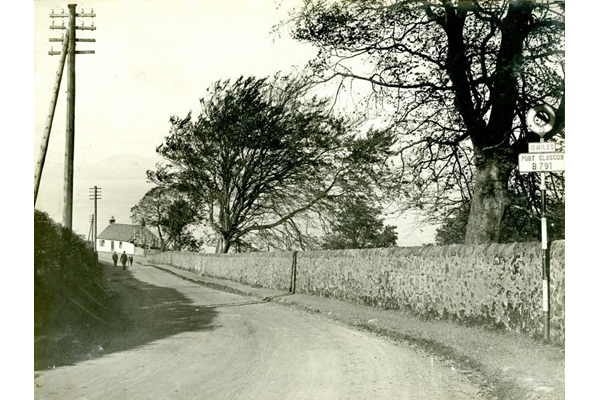
Port Glasgow boundary post
Port Glasgow boundary post on the road leading from Kilmacolm into Port Glasgow. - 2009.98.24 - © McLean Museum and Art Gallery, Greenock

19 Balfour Street, Port Glasgow
Women and children standing at the entrance to the houses at 19 Balfour Street, Port Glasgow. - 2009.98.35 - © McLean Museum and Art Gallery, Greenock
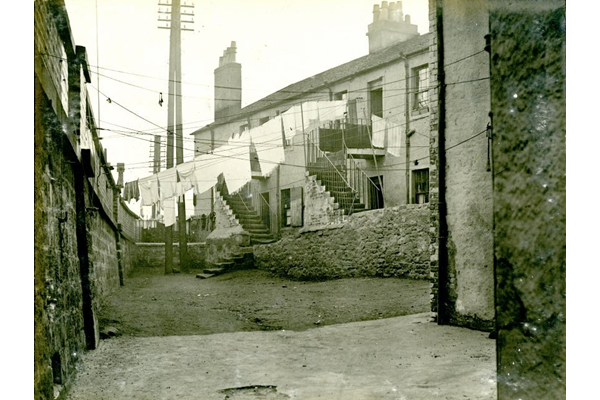
19 Balfour Street, Port Glasgow
Washing line at the back of the tenement at 19 Balfour Street, Port Glasgow. - 2009.98.36 - © McLean Museum and Art Gallery, Greenock

14 Ardgowan Street, Port Glasgow
Families at 14 Ardgowan Street, Port Glasgow, known as Rodger's Court. - 2009.98.37 - © McLean Museum and Art Gallery, Greenock
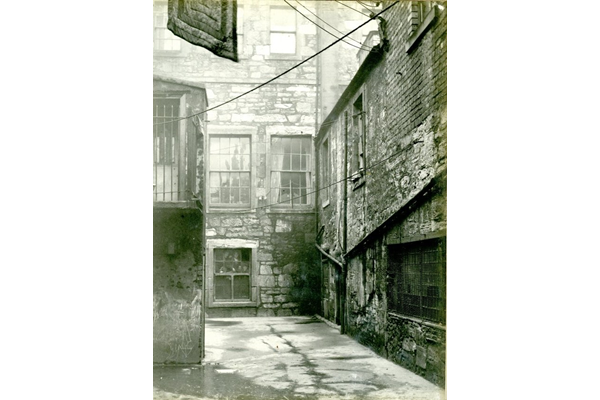
7 Falconer Street, Port Glasgow
The common court at 7 Falconer Street, Port Glasgow. - 2009.98.38 - © McLean Museum and Art Gallery, Greenock
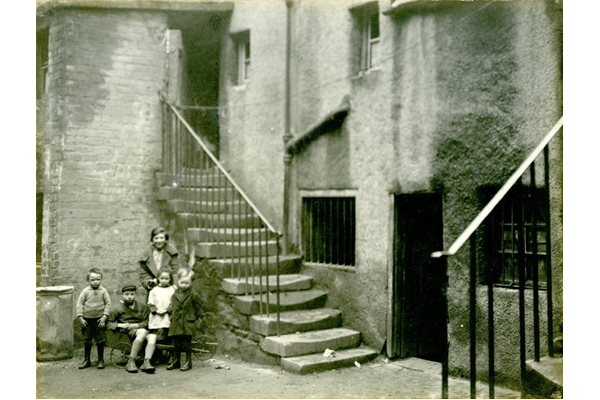
13 Scarlow Street, Port Glasgow
Children at the back of 13 Scarlow Street, Port Glasgow. - 2009.98.39 - © McLean Museum and Art Gallery, Greenock

Scarlow Street, Port Glasgow
Shops and pub at Scarlow Street, Port Glasgow with tram lines visible. - 2009.98.41 - © McLean Museum and Art Gallery, Greenock

24 Church Street, Port Glasgow
Families at the back court at 24 Church Street, Port Glasgow. - 2009.98.42 - © McLean Museum and Art Gallery, Greenock
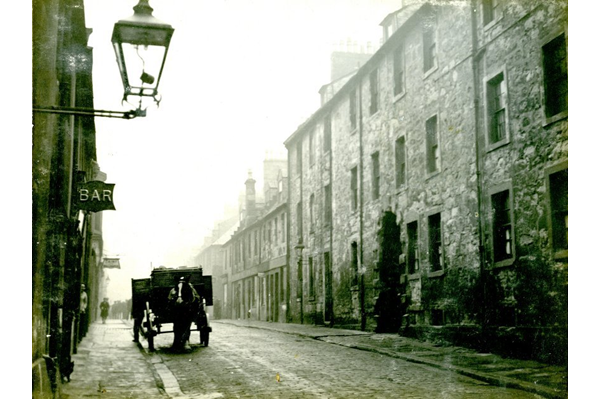
King Street, Port Glasgow
Horse and cart at King Street, Port Glasgow - 2009.98.43 - © McLean Museum and Art Gallery, Greenock
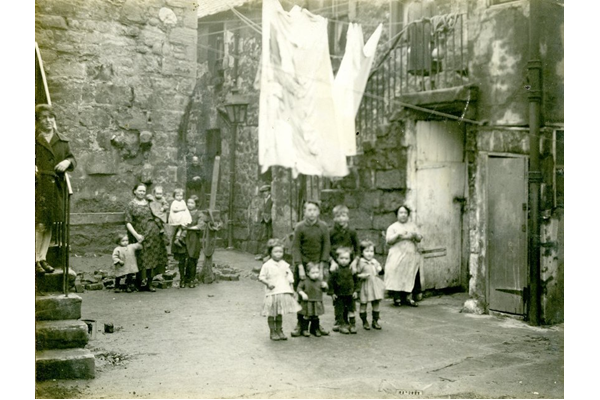
42 King Street, Port Glasgow
Families in the court at 42 King Street, Port Glasgow - 2009.98.44 - © McLean Museum and Art Gallery, Greenock

41½ King Street, Port Glasgow
The housing at 41½ King Street, Port Glasgow - 2009.98.45 - © McLean Museum and Art Gallery, Greenock
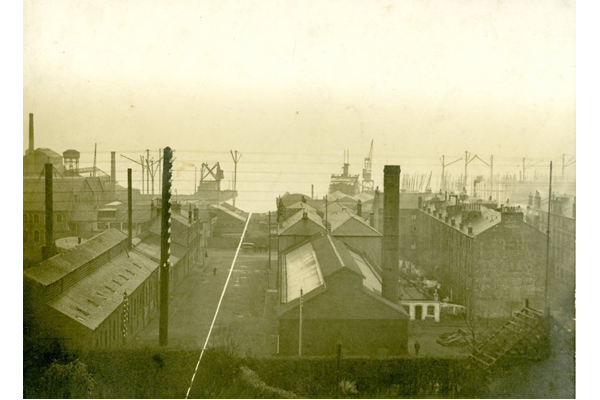
The Boundary of Greenock and Port Glasgow
Boundary Street showing the boundary between Greenock and Port Glasgow. The boundary is shown as a white line. - 2009.98.46 - © McLean Museum and Art Gallery, Greenock

The Greenock - Port Glasgow Boundary
Boundary Street looking North showing the Greenock - Port Glasgow boundary. The boundary is shown as a white line. - 2009.98.6 - © McLean Museum and Art Gallery, Greenock
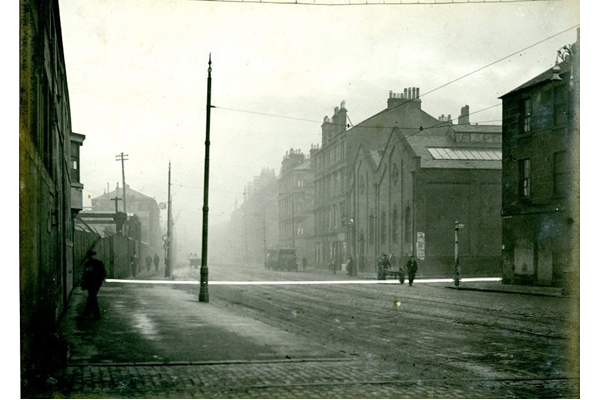
The Greenock - Port Glasgow Boundary looking East
Port Glasgow Road looking East showing the Greenock - Port Glasgow boundary. The boundary is shown as a white line. - 2009.98.4 - © McLean Museum and Art Gallery, Greenock



























